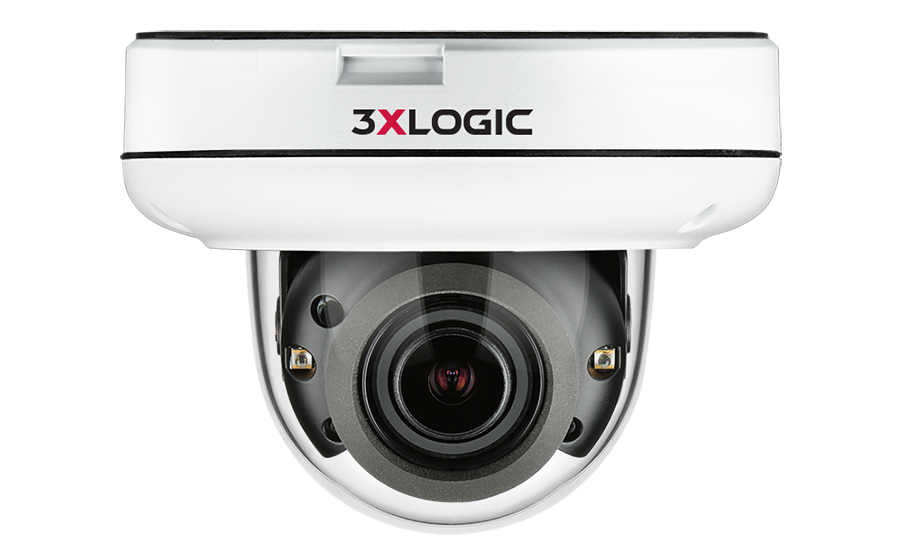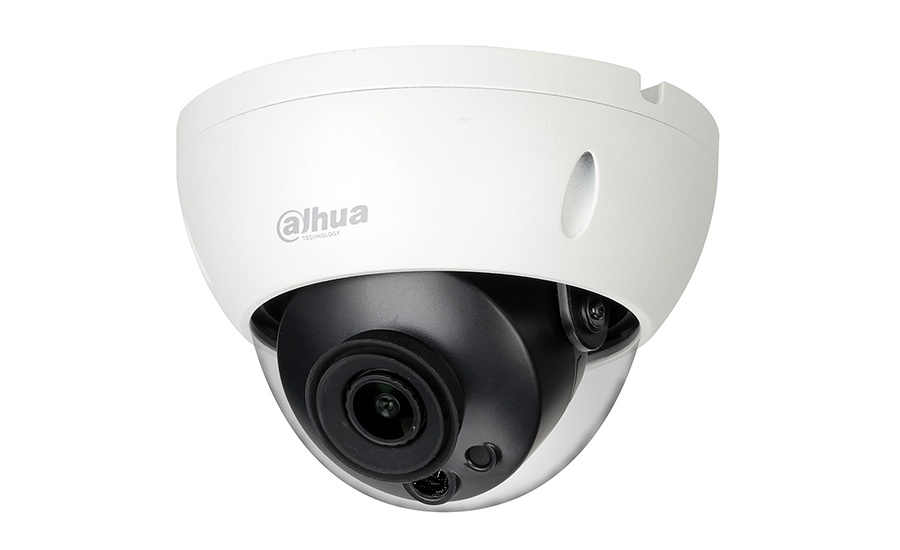VIDEO SURVEILLANCE has become one of the most sought after forms of physical security in commercial, industrial and, to a lesser extent, residential settings. Like all primary security measures, when something new finds its way into our ‘field of view,’ we want to know more about it, put it to work for clients, and provide an additional product and/or service to sell.
The advent of the megapixel camera is one of these new twists to an old gadget. When the first MP camera came along, the price tag was so high that only government institutions and the largest of corporations could afford to buy them. Since then the cost of manufacturing megapixel imagers — as well as the digital means of processing enormous amounts of video data — has dropped significantly. Today, almost anyone can afford one, making them a significant option in an security dealer or integrator’s sales program.
“As this higher state of advanced imaging solutions continues to evolve and become more efficient from a production perspective, the market also benefits from better economies of scale, resulting in premium performance without the premium price,” says Adam Lowenstein, director of product management, i-PRO Sensing Solutions, Panasonic, Rolling Meadows, Ill. “This combination of higher performance and lower price points benefits users across every level of application, regardless of system size and complexity.”
The foremost reason for this in video surveillance is the versatility and superior image quality that megapixel cameras bring to the table. This is true of both MP and HD720p/1080p (2MP) IP cameras. For example, the physical size of an image in a CIF compression format is 360 X 480 pixels, 704 X 480 when converted to 4CIF (D1) and 960 X 480 pixels using 960H. Compare this to a typical 2MP camera, also referred to as 1080P, with an image size of 1920 x 1080, a 5MP IP camera with an image size of 2560 X 1960 pixels, or an 8MP (4K) camera at 3840 x 2160 pixels.
“Hanwha released the first 8K security camera to the market in 2019,” says Aaron Saks, technical product, Hanwha Techwin America, Teaneck, N.J. “This specialized camera delivers 16 times the pixels of an HD image allowing incredible detail to be extracted from large coverage areas.”
No More Analog, Really?
The security industry made a huge turn in the ’90s when manufacturers switched from CRT (Cathode Ray Tubes) to digital imagers. From that point forward these video marvels have made a rapid ascent to the IP (Internet Protocol)-driven HD/MP cameras we have today.
There are security integrators and alarm dealers that often claim, “We’ll never install analog cameras again!” Really? They like to say that analog is no longer a viable solution to securing a facility or home, largely because the cost of an IP camera is so close to that of a higher-grade analog.
A survey conducted on the Surveillance Installers group on Facebook, a forum of nearly 9,000 — 6,800 of which are video surveillance professionals — revealed that just 43 percent of respondents voted “Yes” to the question: “Will analog cameras one day go away?” Fifty-three percent answered “No.” Truthfully, the answer is likely somewhere in between.
From a practical standpoint, as professionals, we know that there’s got to be millions of miles of RG59 and RG6 coaxial cable already installed. Like it or not, this coaxial cable may never entirely go away — at least in the foreseeable future. One reason is the inherently high cost associated with replacing it with Category 5e, 6, 7, or whatever else network engineers are likely to come up with.
Also, from a maintenance standpoint, there are literally millions of analog cameras still in service and it’s doubtful that their owners will opt to replace an entire analog infrastructure because of one or two defunct and out-of-date cameras. So, analog will likely be with us for at least the next 50 years — but there’s no doubt that the overwhelming brunt of the new work that goes on in the meantime will entail the use of IP-based HD/MP cameras.
MP Cameras & Electronic Zooming
It’s not uncommon to find megapixel cameras with an angular view in excess of 110 deg., but analog cameras also can provide angular views of 90 deg. or more. However, where an analog camera equipped with a 1/3-in. imager and a 2.8mm lens typically provides a 90-deg. angle of view — 70 deg. with a 4mm lens, 43.3 deg. with a 6mm lens, etc., it’s not possible to zoom without problems. Even a 2MP camera can outperform this analog camera when it comes to electronically zooming into a live or recorded video image.
For contrast, compare this to a 12MP super fisheye camera manufactured by IDIS Global of Coppell, Texas, which provides a full 360-deg. view without blind spots. Comparatively speaking, this particular megapixel camera provides a choice of six view modes, providing the user with the ability to de-warp footage retrospectively. If an incident does take place that requires further investigation, high-resolution MP technology such as this provides the client as well as the authorities with unprecedented detail resulting in high-definition evidence.
The secret to success where it involves electronic zoom, as it relates to megapixel cameras, lies in the size and quality of the video imager. For example, look at the number of pixels contained on a D1 camera imager versus its 4K/8MP counterpart: 704 x 480 (337.9K) pixels compared to 3840 x 2160 (8.29M) pixels. Because smaller increments of the same camera scene are represented by a single pixel on the 8MP imager compared to the D1, image quality is much, much improved when electronically zooming in on a perpetrators face, license plate, etc.
In part because of this, megapixel cameras are highly sought after in situations where there's a large area that a client wants to closely monitor. Examples include outdoor parking lots, sports stadiums, warehouse floors, airports, city streets, school playgrounds, and many more.
By comparison, in years past it required many fixed SD (Standard Definition) cameras equipped with a motorized zoom lens to cover the same area as a single megapixel camera. Of course, the higher the MP rating the higher quality of fixed Standard Definition (SD) cameras that are necessary to achieve comparable results. The other option is to use a Pan/Tilt/Zoom camera. However, the problem with this is that when something of importance does happen, that the camera may be looking in the wrong direction, especially when using the auto-pan feature.
On the Network’s Edge
According to Paul Garms, director of regional marketing - video systems, Bosch Security Systems, Fairport, N.Y., the primary goal today with regards to megapixel cameras is image quality, processing power, and Artificial Intelligence (AI). By placing this intelligence inside the camera itself, as opposed to an onsite server or remote cloud-based SaaS (Software as a Service), a video surveillance system should realize faster processing speeds, in addition to superior search tools and advanced tracking ability in both real-time and recorded video.
“Video is becoming more about intelligent, data-based solutions than collecting high-quality images and storing them for the record,” he says. “The key to this is combining artificial intelligence with the Internet of Things — specifically joining the networking of physical products and the deployment of artificial intelligence. This trend is something that Bosch has embraced since it first emerged.”
Through improvements in the manufacturing process, MP imagers provide increasingly improved image quality. This, in turn, enables clients to electronically zoom deeper than ever before into a scene with increased clarity, whether in real time or after the fact using recorded high-resolution video.
“As this higher state of advanced imaging solutions continue to evolve and become more efficient from a production perspective, the market also benefits from better economies of scale, resulting in premium performance without the premium price,” Lowenstein says. “This combination of higher performance and lower price points benefits users across every level of application, regardless of system size and complexity.”
MP Vs. HD
So what’s the difference between High Definition (HD) cameras — which is an abbreviated form of High Definition Television (HDTV) — and Megapixel (MP) cameras? There’s really no difference at all. Both terms describe the same thing, only using a different standard. In a word, image quality is expressed in two different ways. In fact, HD cameras are simply a special form of the MP camera family.
The specifications behind the HD format were created by the Society of Motion Picture and Television Engineers (SMPTE). In order for a MP camera to qualify as HD, it must meet the HDTV standard. For example, the image size of a 720p must be less than 1MP, such as 1280 x 720, or 921,600 pixels (multiply the two pixel numbers together). The aspect ratio of an HD camera also is specified as 16:9 while its MP counterparts can be whatever the manufacturer wants them to be.
When it comes to frame rate requirements for HD cameras, the HDTV standard calls for 25 or 30 fps. Which one you use depends on where you are located. In the United States, the frame rate is 30 fps where the electrical power grid oscillates at 60Hz. In other countries, where the electrical grid oscillates at 50Hz, the frame rate is 25 fps.
And, last but not least is the method of image scanning when creating each still image on a digital imager. Megapixel cameras typically use what is called the interlaced method, where each still image is created using two frames (lines 1, 3, 5, 7, 9, etc. and then 2, 4, 6, 8, 10, etc.). Progressive scanning, on the other hand, as specified by the HDTV standard, involves creating one still image per frame of a video stream. It’s faster and it usually creates sharper video images on the screen.
On the Horizon
When it comes to what lies over the horizon, there are two specific things that resonate especially with most megapixel camera manufacturers: The need for additional improvements in the manufacturing and quality of tomorrow’s imagers, and the implementation and continued improvement of AI-oriented software within the camera itself — all at the network edge. All this will result in many improvements, such as overall performance in low-light situations.
“Although there’s always been a trend towards higher megapixels than the previous generations, the focus is changing towards better image quality and intelligence,” says Jennifer Hackenburg, senior product marketing manager, Dahua Technology, Irvine, Calif. “A high megapixel camera brings little benefit if there’s not enough ambient light. If there’s too little, you’ll have a monochrome image or it’ll be noisy. Today’s cameras feature ever-increasing sensitivity to low light conditions, and can allow full color images at night.”
Hackenburg says that this enables colorized video capture in some situations where there’s no supplemental lighting at all. This saves energy, thus saving money. Full color at night also brings important forensic detail you likely will miss when limited to monochrome.
Another feature to benefit from improvements in imagers and AI software is that of in-depth electronic zooming that’s entirely clear of anomalies. Perhaps a good example of this is aliasing, which can manifest itself as a moiré pattern, or perhaps a rippling effect. Larger imagers make it possible to zoom without the risk of these and other anomalies. Best of all, larger imagers can provide clear, in-focus video data, making it easier to identify perpetrators in the act of criminal mischief, a key component in facial recognition.
“Past standards were centered around a 2MP camera and rarely did you see anything much larger,” says Bill Hobbs, vice president global sales, 3xLOGIC, Fishers, Ind. “The current trend, however, particularly outdoors, is for much higher resolution imagers with the norm fast approaching 5MP and cameras commonly available in the 8, 10, and 20MP range. The addition of higher-powered processors and additional processor and storage memory is turning what used to be a passive data gathering device into a full-fledged, edge-resident sensor that is an active participant in the overall security solution.
Last but not least, the improvements made to megapixel camera imagers also aides the process of data analysis. If there’s any one thing that megapixel cameras will do it’s provide enormous amounts of video data that the AI portion of a camera can use in a host of ways. Even when environmental conditions are poor — from a visual perspective — the AI processor will fill in missing gaps in the collected data, rendering a superior image that can be used in many ways. Not only that, but they’ll also integrate with other databases in an effort to identify all aspects of a scene, from the name of the driver of a motor vehicle to the make and model.
Arguably, security dealers and integrators have never witnessed such rapid advancements in technology as we’ve witnessed over the last two decades in camera technology. Just think of the advancements that the next two decades will bring.







